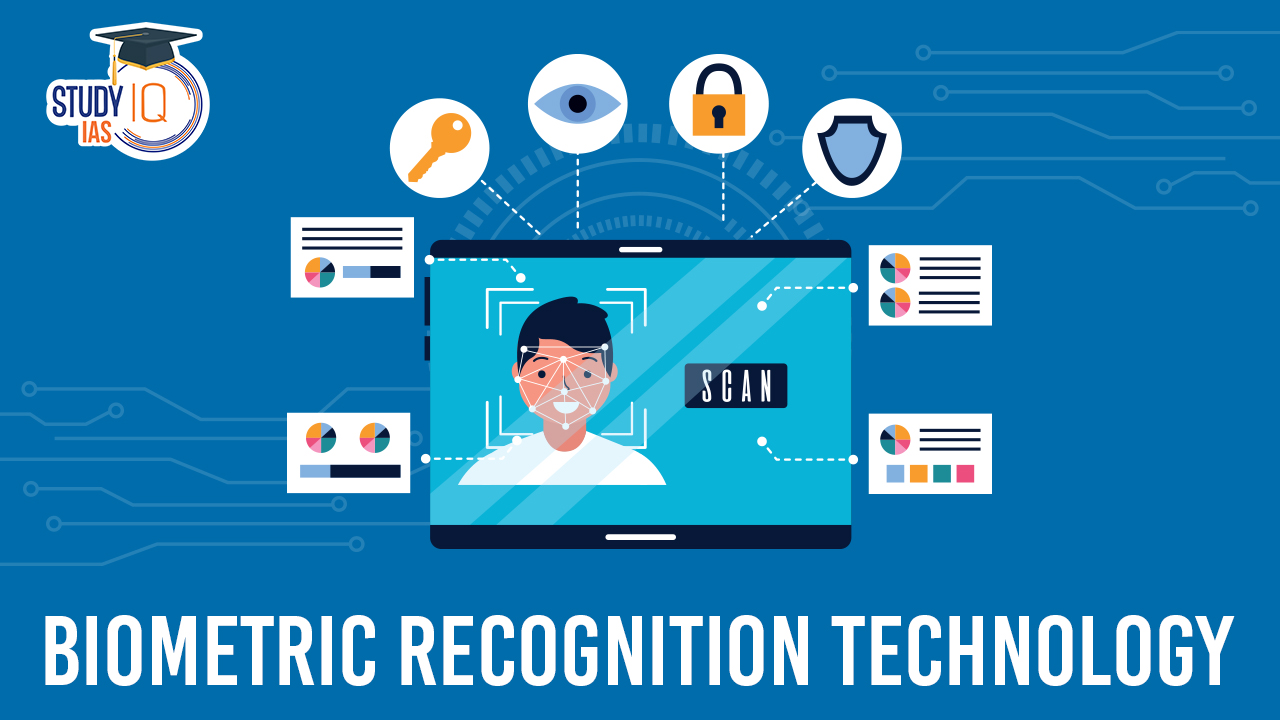Table of Contents
Biometric Recognition Technology uses unique physical or behavioural characteristics to identify individuals, including fingerprints, faces, irises, and voices. It has applications in security, access control, and authentication, providing enhanced convenience and security. However, it also raises privacy and ethical concerns. As technology evolves, it is essential to address these issues while responsibly and ethically utilizing biometrics in various domains, such as mobile authentication, healthcare, and law enforcement.
We’re now on WhatsApp. Click to Join
What is Biometric Recognition Technology?
Biometric Recognition Technology is an automated system that utilizes distinctive biological or behavioural characteristics to identify and verify individuals. Examples of biometric recognition methods include:
- Fingerprint Recognition: This technology identifies individuals based on unique patterns in their fingerprints, widely used in mobile devices and security systems.
- Face Recognition: Facial features are used to verify a person’s identity, employed in smartphone unlocking and surveillance systems.
- Iris Scanning: Scanning the patterns in the iris for high-accuracy identification, commonly used in border security and access control.
- Voice Recognition: Analyzing voice characteristics for authentication in applications like voice-activated systems and phone-based verification.
These methods offer enhanced security and convenience but also raise privacy and ethical considerations. Biometrics play a significant role in applications ranging from mobile authentication to law enforcement.
Check here: Biotech Regulatory Agencies in India
Facial Recognition Technology in India
India currently lacks a dedicated data protection law or specific regulations governing facial recognition technology (FRT). However, the Ministry of Home Affairs has issued guidelines to oversee the use of automated facial recognition systems (AFRS) by law enforcement agencies. The unrestrained deployment of facial recognition systems for potentially unwarranted purposes has ignited privacy concerns, with many individuals unaware of constant surveillance in public spaces. Some notable details on FRT in India include:
- 125 FRT systems are in operation nationwide.
- The government has invested over INR 1,464.18 Cr in these systems.
- FRT is used for entry at three major Indian airports: Delhi, Bengaluru, and Varanasi, with plans for nationwide implementation.
- NEC India claims its FRT algorithms can identify individuals even when their features are obscured by masks.
- Staqu allegedly supplied FRT technology to law enforcement agencies in at least eight states, including Uttar Pradesh.
Features of Biometric Recognition Technology
Biometric recognition technology incorporates several features that make it a valuable tool for identifying and verifying individuals. Some key features include:
- Uniqueness: Biometric traits are inherently unique to each individual, ensuring that no two people have precisely the same biometric features.
- Universality: Most people possess the biometric trait under consideration, such as fingerprints, making it widely applicable.
- Permanence: Biometric traits are relatively stable over time, ensuring consistent recognition over the long term.
- Collectability: The technology can gather biometric data in a convenient and non-invasive manner.
- Performance: Biometric recognition systems should have low error rates in identifying individuals accurately.
- Acceptability: People are generally comfortable with biometric identification, as it’s a natural and convenient way to prove identity.
- Circumvention Resistance: Biometric systems are designed to be resistant to fraudulent attempts to mimic or alter biometric data.
These features make biometric recognition technology suitable for a wide range of applications, from secure access control to personal device authentication and law enforcement.
Check here: Type of Biotechnology
Applications of Biometric Recognition Technology
| Application | Description |
| Access Control | Secure entry to sensitive areas and facilities. |
| Mobile Device Security | Unlock smartphones and tablets, and protect data. |
| Financial Services | Authenticate users in online banking and transactions. |
| Healthcare | Secure patient records, and ensure accurate identification. |
| Law Enforcement | Aid in criminal investigations and maintain criminal databases. |
| Border Control | Enhance passport control and border security. |
| Time and Attendance | Monitor employee attendance and manage payroll. |
| Identity Verification | Verify identities for online services and social media platforms. |
| Airport Security | Passenger identification and security checks in airports. |
| National ID Programs | Issue secure national ID cards or passports. |
| Forensics | Aid in criminal investigations and victim/suspect identification. |
| Education | Track student attendance and control library access. |
| Smart Cards and Payments | Enhance security in financial transactions and payment systems. |
| Healthcare Access | Control access to restricted areas in healthcare settings. |
Biometric Recognition Technology in India
Biometric recognition technology has seen widespread adoption in India, driven by several key applications:
- Aadhaar: The massive Aadhaar project has enrolled over a billion citizens, using biometric data for identity verification in various government services.
- Financial Inclusion: Biometrics facilitate the opening of bank accounts and direct benefit transfers under the Pradhan Mantri Jan Dhan Yojana.
- E-Governance: Biometrics enhance the delivery of government services and digital identity verification.
- Security: Government and private organizations use biometrics for secure access control and data protection.
- Education: Biometrics streamline attendance tracking and exam verification in educational institutions.
- Healthcare: Biometrics ensure patient identification and reduce medical errors.
- Border Security: Biometric technologies are used at airports and entry points for immigration and border control.
- Law Enforcement: Databases of fingerprints and facial images assist criminal investigations.
- Smartphones: Many smartphones feature biometric security measures.
- Elections: Some states explore biometric voting systems to enhance electoral integrity. While biometrics offer convenience, privacy and security concerns are being addressed through legislation and regulations.
Biometric Recognition Technology Challenges
- Privacy Concerns: Collection and misuse of biometric data.
- Security Vulnerabilities: Vulnerability to hacking and spoofing.
- Accuracy Issues: False positives and false negatives.
- Cost: High implementation and maintenance expenses.
- Interoperability: Lack of standardization across systems.
- Permanence of Traits: Some biometrics can change over time.
- Ethical and Legal Concerns: Consent and data protection issues.
- Diversity and Inclusivity: Biases and discrimination.
- Data Management: Secure storage and management.
- Social Acceptance: Concerns about surveillance and tracking.
- Environmental Factors: Impact of conditions on accuracy.
- Standardization: Lack of common industry standards.
Biometric Recognition Technology UPSC
Biometric Recognition Technology utilizes unique physical or behavioural traits like fingerprints, faces, irises, and voices for identity verification. While offering enhanced security and convenience, it raises privacy and ethical concerns. In India, there’s no specific data protection law for facial recognition technology, but the Ministry of Home Affairs has issued guidelines.
The unchecked use of facial recognition systems has privacy implications, and India has deployed 125 systems. Other applications include Aadhaar for citizen identification, banking, healthcare, education, and law enforcement. Challenges encompass security vulnerabilities, accuracy issues, cost, and data privacy. The future holds promise with advancements like multimodal biometrics and continuous authentication.


 Agricultural Monitoring and Event Detect...
Agricultural Monitoring and Event Detect...
 Genetically Modified Crops in India, Reg...
Genetically Modified Crops in India, Reg...
 What are Polycyclic Aromatic Hydrocarbon...
What are Polycyclic Aromatic Hydrocarbon...





















